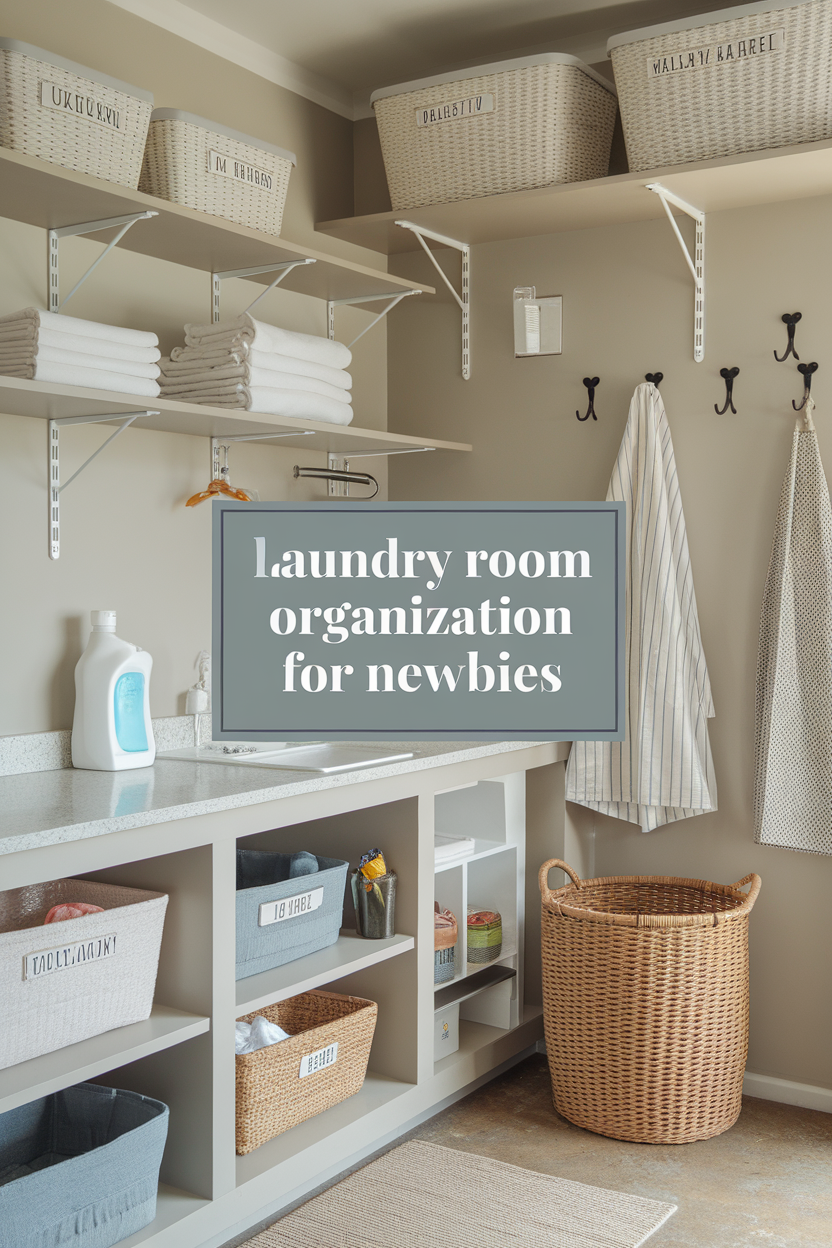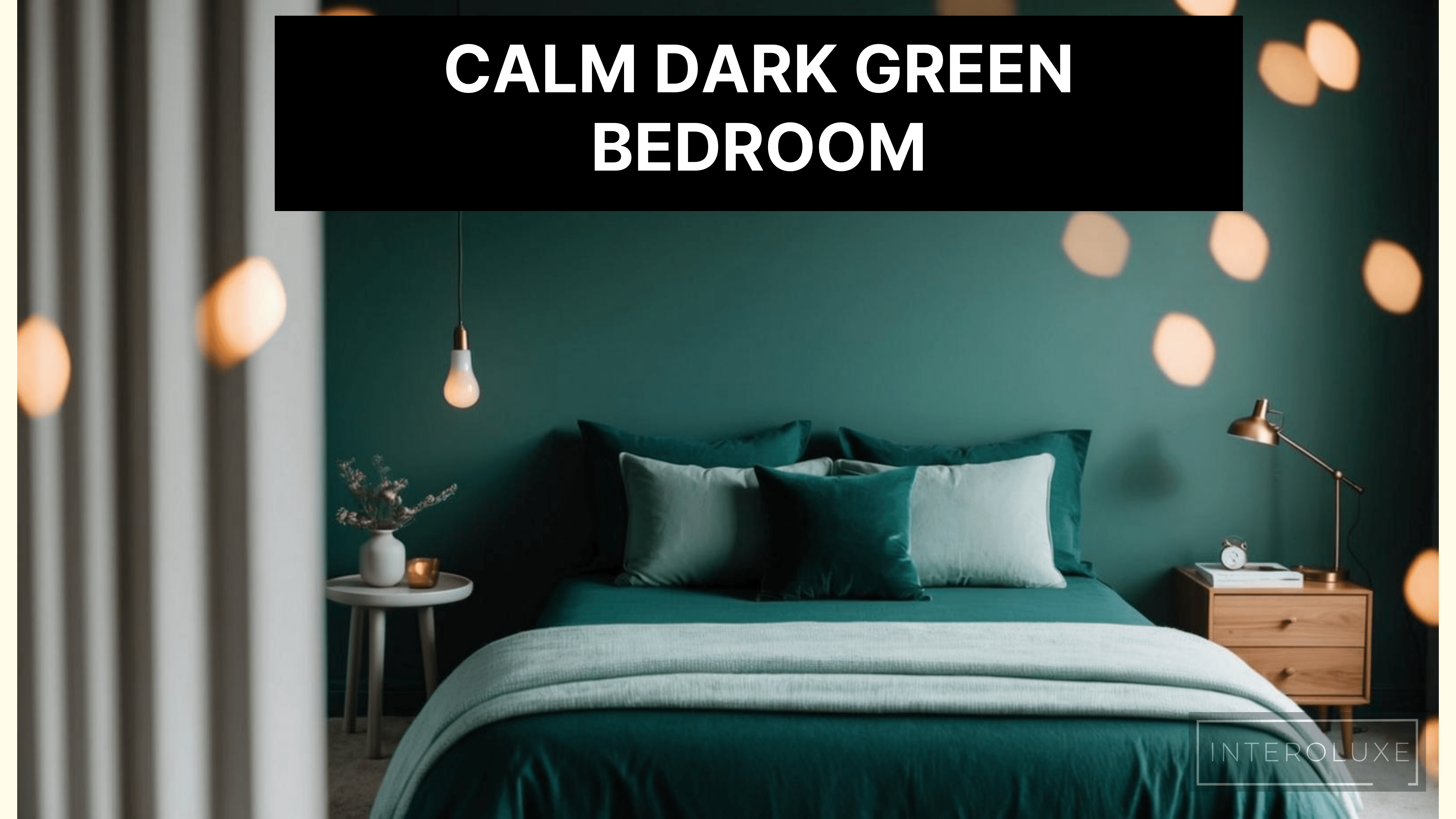7 Laundry Room Hacks for Beginners (Chaos to Clean!)

A messy laundry room can make doing chores even more frustrating. I know how overwhelming it can feel to face piles of clothes with nowhere to sort, fold, or hang them properly.
Getting your laundry space organized doesn’t have to be complicated. In fact, it can actually make washing clothes much less stressful.
Looking at clever laundry room storage ideas can help transform even the smallest spaces. I’ve found that starting with a few basic organization principles makes a huge difference.
Whether you have a dedicated room or just a closet, the right setup will save you time and reduce the chaos that comes with managing your family’s laundry needs.
1) Use Vertical Storage To Maximize Space

When I first started organizing my laundry room, I discovered that vertical space is often overlooked. Most people focus on floor and counter space, missing the valuable real estate on their walls.
Thinking upward instead of outward changed everything for my small laundry area.
Installing shelves above your washer and dryer creates instant storage for detergents, fabric softeners, and other supplies. I found that wall storage helped keep my frequently used items within reach while freeing up horizontal surfaces.
Vertical hampers are another game-changer for sorting laundry efficiently. I switched to a vertical hamper system in the corner of my room, which made separating whites, colors, and delicates much easier.
Don’t forget about the back of your door! I use over-the-door organizers for storing small items like dryer sheets, stain removers, and lint rollers. This simple addition uses space that would otherwise go unused.
For small laundry rooms, maximizing vertical storage might be your best solution. I added some storage cubes stacked vertically, turning limited floor space into significant storage capacity.
2) Color-code Your Laundry Baskets For Easy Sorting

One of the simplest ways I’ve found to transform laundry chaos into an organized system is by using color-coded laundry baskets. This approach creates a visual system that makes sorting clothes effortless. Even family members who aren’t laundry experts can participate.
I recommend using a different colored basket for each category of clothing. For example, a white basket for light clothes, a black or navy basket for dark items, and a red basket for colorful garments. This color-coding system makes a significant difference in laundry efficiency.
Consistency is key. Place the baskets in an accessible location where everyone can easily drop their dirty clothes into the appropriate container. I find that labeling each basket can be helpful for those who are just learning the system.
This method is particularly effective for teaching children how to sort laundry. Kids quickly learn what goes in lights, darks, and whites when there’s a clear visual guide. It becomes a habit they can maintain into adulthood.
I’ve noticed that sorting by color helps prevent laundry disasters like color bleeding. The basic rule I follow is to separate clothes by color and fabric type to avoid dye transfers that ruin clothes.
3) Install Wall-mounted Drying Racks

Wall-mounted drying racks are game changers for any laundry room. They save floor space and give you a dedicated spot to air dry delicate clothes. I’ve found these racks to be essential for anyone trying to organize their laundry area effectively.
You can find affordable wall-mounted drying racks at most home improvement stores or online. The Step Up Laundry Drying Rack is one popular option that works well in smaller spaces. Installation is usually straightforward with basic tools.
Before installing, I recommend measuring your wall space carefully. Make sure to choose a location that won’t interfere with other laundry room activities but remains convenient for use.
For installation, you’ll need to locate wall studs for secure mounting. Most racks come with hardware, but you might need a drill, level, pencil, and screwdriver. Proper installation ensures your rack will support wet clothes without pulling away from the wall.
If you’re feeling handy, you can even build your own drying rack with wooden frames and dowels. This DIY approach lets you customize the size to fit your specific space needs.
4) Hang An Ironing Board On The Back Of The Door

Hanging an ironing board on the back of a door is one of my favorite space-saving tricks for small laundry rooms. This simple solution keeps your ironing board accessible yet completely out of the way when not in use. I’ve found this especially helpful in apartments or homes where floor space is limited.
You can purchase over-the-door ironing board hangers that require no installation. These hangers typically hook over the top of the door and have spots to hold both your iron and ironing board securely.
For a more permanent solution, I recommend creating a DIY ironing board hanger mounted directly to the door. This option feels more stable and can be customized to fit your specific ironing board size.
Installation is straightforward with most holders. You’ll need basic tools like a screwdriver and measuring tape to ensure proper placement. Make sure to position the hanger at a height that makes the ironing board easy to access.
Some wall-mounted holders can also be attached to the back of doors and include storage for the iron itself. I find these dual-purpose hangers particularly useful for maximizing organization.
5) Frame And Display A Guide To Laundry Care Symbols

Laundry symbols can be confusing when you’re new to doing laundry. I recommend framing a laundry care symbol guide for your laundry room to make washing clothes easier. You can find laundry symbols framed art pieces that are both functional and decorative.
For a budget-friendly option, I like to print a laundry care symbol guide and place it in a simple frame. These printable guides often come in different background colors to match your laundry room decor.
Position your framed guide where you’ll see it while sorting laundry. I find that hanging it near my sorting area or above the washing machine works best. This makes it easy to check symbols when I’m unsure about how to wash an item.
The guide should include symbols for washing, drying, ironing, and professional cleaning. Many guides are designed with a minimalist style that looks clean and modern on your wall.
I’ve found that having this visual reference saves me from ruining clothes with incorrect washing methods. It’s especially helpful for delicate fabrics or new garments with unfamiliar care instructions.
6) Label Shelves And Containers For Quick Access

Adding labels to your laundry room shelves and containers makes finding what you need much easier. I find that clear labels eliminate guesswork and save time when doing laundry. This simple step can transform a cluttered space into an organized system.
Waterproof labels are essential for laundry areas since they resist moisture and detergent splashes. I recommend using minimalist square labels with black text on white backgrounds that measure about 2.5 x 2.5 inches.
You can label everything from detergent containers to bins for sorting clothes. I’ve found that organizing laundry supplies in labeled drawers keeps smaller items like stain removers and dryer sheets neatly contained.
For a professional look, I use printed labels instead of handwritten ones. Many websites offer free downloadable label templates specifically for laundry rooms that you can print at home.
When labeling, I make categories clear and specific. Labels like “Detergent,” “Stain Removers,” and “Dryer Sheets” work better than vague terms like “Supplies” or “Stuff.”
7) Use Stackable Bins To Organize Laundry Supplies

Stackable bins have become my go-to solution for creating order in my laundry room without wasting space. They help me group similar items together while making everything easy to see and grab when needed. I can easily find detergent, fabric softener, and stain removers in their designated bins.
Clear bins work best since I can quickly identify what’s inside without having to open each container. I like to stack them by frequency of use, with everyday items in the most accessible bins and specialty products in the higher ones. This simple system saves me time and prevents frustration during laundry day.
Dollar stores offer affordable bins that work perfectly for laundry organization without breaking the bank. I’ve found that labeling each bin makes the system even more effective, especially when multiple family members use the space.
For small laundry rooms, I recommend using the vertical space by stacking bins along walls or on shelving units. This approach has transformed my cramped laundry area into a functional space where everything has its place.
Understanding Laundry Room Essentials
A well-organized laundry room starts with having the right supplies and storage solutions. The proper detergents and efficient hamper systems can transform your laundry routine from chaotic to streamlined.
Choosing the Right Detergents and Supplies
When selecting laundry detergents, I recommend considering your specific needs. High-efficiency washers require HE detergents that produce fewer suds. For sensitive skin, fragrance-free and dye-free options work best.
Essential laundry supplies should include:
- Stain remover for tackling tough spots
- Oxygen bleach for brightening whites
- White vinegar as a natural fabric softener
- Fine mesh laundry bags for delicates
I keep my detergents and supplies on a shelf or in laundry room containers that are clearly labeled. This makes grabbing what I need quick and efficient.
For maximum organization, I store smaller items like dryer sheets and stain sticks in clear containers. This visibility prevents buying duplicates and saves money.
Efficiently Using Laundry Baskets and Hampers
The right hamper system can dramatically improve your laundry workflow. I use a sorting hamper with multiple compartments to pre-sort lights, darks, and delicates as clothes are discarded.
Place hampers strategically throughout your home – perhaps one in each bedroom and bathroom. This encourages family members to sort their own laundry properly.
For transporting clean clothes, I recommend having designated baskets that don’t mix with dirty laundry containers. Efficient storage solutions are key to maintaining an organized space.
Consider wall-mounted or foldable hampers if your laundry room is small. These space-saving options can be tucked away when not in use, giving you more room for folding and sorting.
I also label baskets for each family member so clean clothes can be easily distributed. This simple step saves time and prevents mix-ups when putting laundry away.
Maximizing Space In Your Laundry Room
A well-organized laundry room makes washing clothes much easier. Good storage solutions help you keep everything in its place and make the most of your available space.
Utilizing Vertical Space Effectively
Wall space is often overlooked in laundry rooms. I recommend installing floating shelves above your washer and dryer to store detergents, fabric softeners, and other supplies. These shelves keep items within reach but off your limited counter space.
Stackable storage bins work wonderfully for sorting laundry or storing seasonal items. Label each bin clearly so you can find what you need quickly.
Consider adding a pegboard to hang cleaning tools like brushes, lint rollers, and stain removers. This maximizes space and usability while keeping frequently used items visible and accessible.
Tension rods installed between cabinets create perfect spots for hanging clothes that need to air dry. You can also mount a fold-down drying rack that can be tucked away when not in use.
Incorporating Multi-Functional Furniture
Choose furniture that serves multiple purposes to make your laundry room more efficient. A rolling cart with multiple shelves can hold supplies and be moved wherever needed.
Look for a laundry sorter with a built-in ironing board on top. This saves precious floor space and eliminates the need for storing a separate ironing board.
Consider adding a slim cabinet between your washer and dryer if space allows. This creates additional storage while utilizing what would otherwise be wasted space.
Foldable tables or countertops that can be extended when needed are perfect for sorting and folding clothes. When not in use, they can be collapsed to create more floor space.
A bench with storage underneath offers a place to sit while providing hidden storage for bulkier items like extra towels or cleaning supplies.








